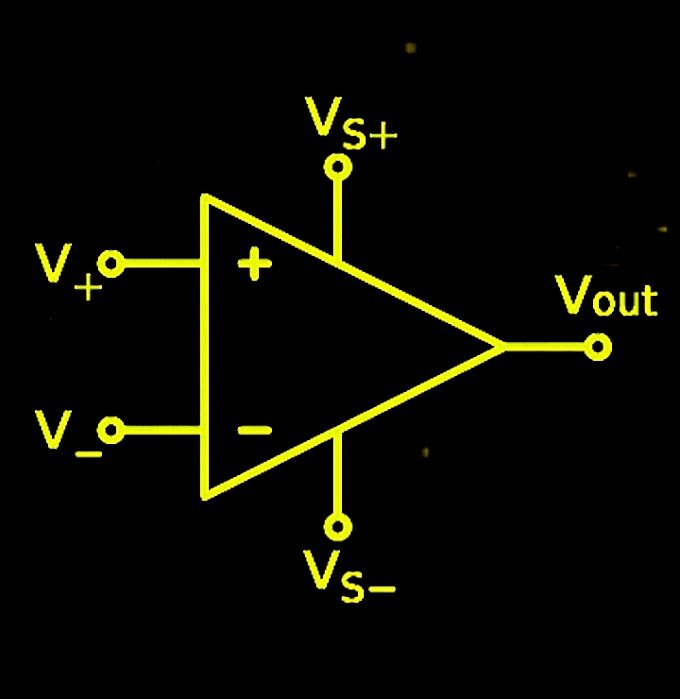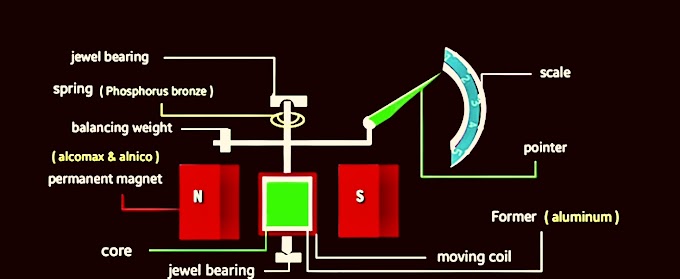what is hydro-electric power station?
hydro-electric power station is a generating station which utilizes the potential energy of water at a high level for the generation of electrical energy is known as the hydro-electric power plant.
hydro electric power station are generally located in hilly areas where dams can be build conveniently and large water reservoir can be obtained. in a hydro-power station the water is drawn from the dam , water is led to a water turbine the water turbine captures the energy in falling water and changes the hydraulic energy that is the flow of water into a mechanical energy at the turbine shaft. the turbine drives the alternator which converts mechanical energy into electrical energy hydroelectric power station is becoming very popular because the reserves of fuels used in this power plant is water and the water is free of cost and it is less expensive.
advantages of hydro-power plant
- as the water is used in generation of electricity in this plant there is no fuel is used.
- this station is quite neat and clean as compare to other because no smoke is produced in generation of electricity.
- it requires very small running charges because here we use water as the fuel the is available at free of cost.
- it has simple construction and requires less maintenance comparatively to others.
- it is robust and it has longer life.
- such plants serves many purposes in addition to the generation of electrical energy, they also helps in irrigation and controlling floods.
- although such plants requires the attention of highly skilled person at the time of construction and the working of the plant.
disadvantages of hydro-power plant - it involves high capital of cost due to construction of dam
- there is uncertainty about the availability of huge amount of water due to dependence on weather conditions.
- skilled and experienced hands are required to build and running of the plant
- it requires high cost of transmission lines as the plant is far from the transmission section
simple construction of hydro-electric power station
A hydro-electric power station simply involves the conversion of hydraulic energy into electrical energy, yet it embraces many arrangements for proper working and efficiency. the schematic arrangement of a modern hydroelectric power plant
the dam is constructed across a river or lake and water from the catchment the valve house contains main sluice valve and automatic isolating valve. the former controls the water when the penstock bursts. from the valve house water is taken to the turbine through a huge steel pipe known as penstock the water turbine convert hydraulic energy into electrical energy. A surge tank is build jut before the valve house and protects the penstock from bursting in case the turbine gates suddenly closed due to electrical load being thrown off. when the gates close there is sudden stopping of water at the lower end of the penstock can burst like a paper log.
selection of site for hydro-electric power station
there are some points should be taken into account while selecting the site for the hydro-electric power station :
1. Availability of water : since the primary requirement of hydro-electric power station is the availability of huge quantity of water , such plants should be build at a place where adequate water is available at a good head.
2. storage of water : there are wide variation in water supply from a river or canal during the year this makes it necessary to store water by constructing a dam in order to ensure the generation of power throughout the year. the storage helps in equalising the flow of water
3. cost and type of land : the land for the construction of the plant should be available at a reasonable price. further, the bearing capacity of the ground should be adequate to withstand the weight of heavy equipment to be installed.
4. transportation facility : the site selected for a hydro-electric plant should be accessible by rail and roads so that necessary equipment an machinery could be easily transported. it is clear from the above mentioned factors that ideal choice of site for such a plant is near a river in hilly areas where dams can be conveniently build.
components of hydro-electric power plant
we shall discuss the hydro-electric power plant in three parts
- hydraulic structures
- water turbines
- electrical equipment
1. hydraulic structures. hydraulic structures includes the the various parts of hydro-electric power plant like dam, spillways, headworks, surge tank, penstock, and accessory works.
- dam. A dam is a barrier which store water and creates a water head. dams are build of concrete or stones masonary, earth or rocks fill. the type and arrangement depends upon the topography of the site A masonary dam may be build in a narrow canyon. an earth dam may be best suited for a wide valley the type of dam also depends upon the foundation conditions, local materials and transportation available.
- spillways. there are times when the river flow exceeds the storage capacity of the reservoir such a situation arises during heavy rainfall in the catchment area in order to discharge the surplus water from the storage reservoir into the river on the down stream side of the dam, spillways are used. spillways are constructed of concrete piers on the top of the dam.
- headworks. the headworks consists of the diversion structures at the head of an intake they generally includes booms and racks for diverting floating debris, sluices for by-passing derbies and sediments and valves for controlling the flow of water to the turbine the flow of water into and through headworks should be as smooth as possible to avoid head loss.
- surge tank. open conduits leading water to the turbine required no protection however, when closed conduits are used, protection become necessary to limit the abnormal pressure in the conduit for this reason, closed conduits are always provided with a surge tank. a surge tank is a small reservoir or tank in which water level rises or fall to reduce the pressure swings in a conduit. a surge tank is located near the beginning of the conduit. when the turbine is running at a steady load, there are no surges in the flow of water through the conduit. i.e., the quantity of water flowing in the conduit is just sufficient to meet the turbine requirements. however when the load on the turbine decreases, the governor closes the gates of turbine, reducing water supply to the turbine. the excess water at the lower end of the conduit rushes back to the surge tank and increase its water level. thus the conduit is prevented from bursting. on the other hand when load on the turbine increases, additional water is drawn from the surge tank to meet the increased load requirement. hence, a surge tank overcomes the abnormal pressure in the conduit wen load on the turbine falls and acts as a reservoir during increase on the turbine.
- penstock. penstock are open or close conduits which carry water to the turbines. they are generally made of reinforced concrete steel concrete penstock are suitable for low heads (< 30 m) as greater pressure causes rapid deterioration of concrete. the steel penstock can be designed for any head; the thickness of the
penstock increases with the head or working pressure.
2. water turbine.
water turbine are used to convert the energy of falling water into mechanical energy. the principal type of water turbine are:
- impulse turbine
- reaction turbine
1. impulse turbine. such turbines are used for high heads. in an impulse turbine, the entire pressure of water is converted into kinetic energy in a nozzle and the velocity of the jet drives the wheel. the example of this type turbine is the pelton wheel.
2. reaction turbine.
reaction turbine are used for low and medium heads. in a reaction turbine, water enters the runner partly with pressure energy and partly with velocity head
3. electrical equipment.
the electrical equipment of a hydro-electric power stations includes alternators, transformers, circuit breakers and other switching equipment
classification of hydro-power plant.
1. quality of water available
- Run-off river plant without pondage
- Run of river plant with pondage
- Reservoir plant
2.head of water- low head
- medium head
- high head
3. nature of load - base load
- peak load
- pumped storage hydro-electric power plant
1.classification according to quantity of water available
Run-off river plant without pondage
In this type of hydro-electric power plant, the available water from river or lake is not stored in pond. whenever the water available from river or lake it is directly used to run water turbine. the capacity of such plants depends upon the rate of flow of water. such type of plant may run during rainy season.
Run of river plant with pondage
the above mentioned runs of river plant without pondage have some limitations. to overcome this drawback, in this type of hydro-electric power plant the available water from river or lake is stored in pond. due to this storage water in pond, it is useful to run the plant off-peak & peak period. the capacity of such type of hydro-electric plant is depend upon the size of the pond.
Reservoir plant
this type of hydro-electric power plant is totally different from the above mentioned two plants. this type of hydro-electric power plant, reservoir is provided. this reservoir is useful to store an ample quantity of water during rainy season & this is useful throughout the year. such type of power plant has better capacity. this type of hydro-power plant may be used as a base load plant. majority of the hydro-electric power plant are of this type.
2. classification according to available water heads
low head plant
the low head plant have water head below 30m. A low head power plant store water by construction of dam across river or lake.the power house is installed near the base of dam on the downstream side. the barrages with regulations gates are provided to flow of excess water in river or lake. In low head hydro-electric power plant kaplan turbine can be used.
medium head plants
If the available water head is between 30 and 100m, the plant is called a medium-head plant. water is led to the turbine from the forebay by the penstock, which may be steel pipes. forbay also stores the rejected water as the load on the turbine decreases. francis turbines are normally used.
high heads power plants
If the available head is more than 300m, the plant is called high-head plant. the civil works include a surge tank, the function which is to meet the sudden changes in the requirement of water caused by the fluctuations in the system load.
3. classification of plant according to the nature of load:
base load plants
the unvarying load which occurs almost the whole day on the station is known as the base load. refer the load curve it is clear that 20MW of load to be supplied by the station at all times of day & night i.e. Throughout 24 Hours. therefore 20MW is the base load of the station. the base ;load on the station is almost constant in nature. the base largest capacity & load factor
peak load plants
the various peak demand of load over & above the base load on the station are known as peak load, refer the load curve , it is clear that there are peak demand of load excluding peak load. these peak demand of the station generally from a small part of the total load & may occur through the day. run-off river plants with pondage can be used as peak load.
pumped storage hydro-electric power plant
the schematic arrangement of pumped storage hydro-electric power plant is as shown this type of power plant is useful where availability of water for power generation is insufficient. generally, there are two ponds. one is in head race level & other is tail race level.the stored water from head race pond is useful for electrical power generation. when the water flows towards turbine, it starts to rotate. the discharge water from turbine is stored in tail race pond. during off peak period the stored water from tail race pond is pumped to head race pond again, with the help of motor. this cycle is continuously repeated. that's why it is known as pumped storage hydro-electric power plant.



















No comments:
Post a Comment